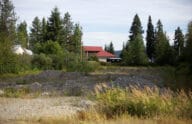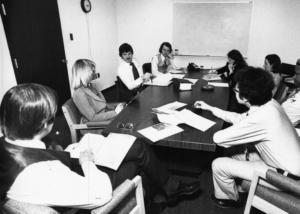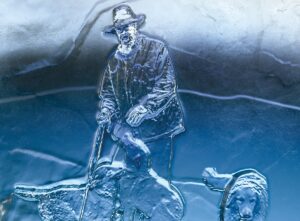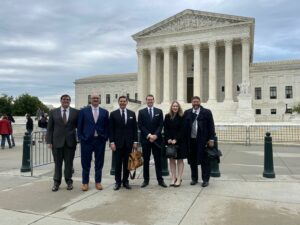Earth, wind, and water: 1970s activists and the administrative state
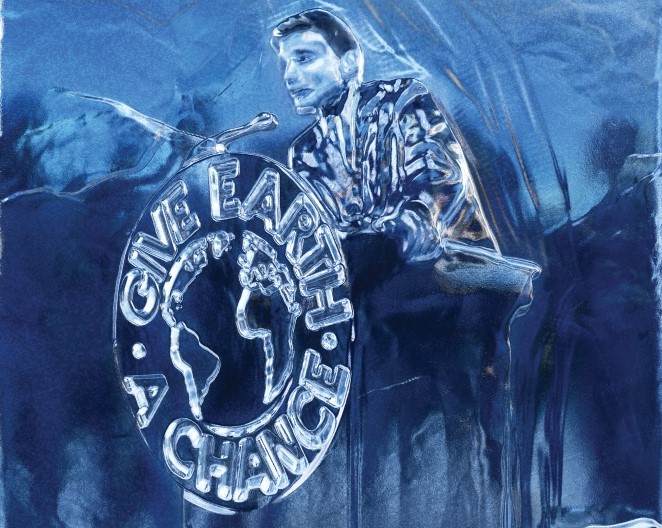
In the late 1970S, two sociologists asked: Where had all the 1960s radical activists—the countercultural voices who clamored for a revolution—ended up in the seventies?
The answer, published in a 1980 study, was somewhat startling: Many former radicals were now working in or with the government. They were no longer fighting “the Man.” Instead, the Woodstock Generation had gone to Washington to join the man—fighting to give the government unprecedented power over Americans’ lives.
Indeed, from within and alongside the government, progressive activists spent the 1970s helping to grow the administrative state—mostly in the name of protecting the environment at the expense of individual liberty.
One of the Chicago 7 became deputy director at a federal agency. Another former activist turned government employee told the sociologists, “Everyone’s been co-opted but that’s the genius of the system. It’s not a mark of failure, but of success.”
Indeed, from within and alongside the government, progressive activists spent the 1970s helping to grow the administrative state—mostly in the name of protecting the environment at the expense of individual liberty. The anti-authoritarian “flower power” of the late sixties was morphing into a flower power of a different kind: regulatory power wielded like a weapon to protect nature from human beings at any cost.
‘Big Brother Is Watching You’
When countercultural activists came to Washington to push various social causes, they quickly clashed with an older class of government workers.
“Nader’s Raiders” exemplified the new activist mindset. Harvard Law graduate Ralph Nader recruited students from across the country to pressure the federal government into regulatory action on automobile safety, trade, and the environment.
“Our children are children of smog, who have never known fresh water, or clean air,” Nader opined.
Nader and his Raiders took early aim at the Federal Trade Commission in a blistering 1969 report that said current FTC staffers displayed “a lack of commitment to the regulatory mission.”
But as syndicated columnist John Chamberlain quickly pointed out, the report unveiled a fault-line disagreement about how the federal government should behave.
“There is a gap as wide as the Atlantic Ocean between [then-FTC Chairman Paul Rand] Dixon’s philosophy of what a regulatory agency should do and the philosophy expressed by the Nader-organized investigative team,” Chamberlain wrote.
Dixon, who grew up during “the hard knocks period of the depressed thirties,” firmly believed the government should not enforce a law “that the people don’t want enforced,” Chamberlain noted.
But Nader’s Raiders, who came of age during the affluent sixties, considered this “a horrifying softness.”
“Their report makes it obvious that they want a Federal Trade Commission that would multiply its staff and budget many times over, engaging in positive detective work… In short, a ‘Big Brother Is Watching You’ approach,” Chamberlain wrote.
Dixon called the Nader youths “young zealots,” and Chamberlain complained that “the gimlet-eyed gumshoeing advocated by the students for policing detergent and mouthwash sales” would “cost billions.”
Despite these well-founded concerns, the students’ philosophy soon became the norm in Washington.
The new generation of big government
Throughout the seventies, new federal hires took up the mantle of “positive detective work.”
The makeup of federal agencies thus shifted. Rutgers University professor Jefferson Decker describes the shift at the Bureau of Land Management: Up until 1970, BLM hired mostly range-management experts from public universities in western states, where most federal land management occurs. “In the 1970s, however, a new sort of Interior Department bureaucrat began to appear on the job,” Decker writes. The new staffers weren’t from western states, and their interest wasn’t in range management; it was in ecology.
Put differently, they were in public service to further a cause, not to engage in reasoned decision-making and implement the policies as directed in their statutory mandates.
But not all activists who flooded Washington ended up working for the government. Progressive public interest groups were “sprouting like daisies,” as the Los Angeles Times reported in the early seventies. Alongside Nader’s Raiders were hundreds of other advocacy groups that began pulling the government in different directions, sometimes through lawsuits that forced agencies to aggressively enforce rules already on the books.
But older laws and regulations did not go far enough for the activists’ progressive vision. And ultimately Congress cooperated by delegating vast power to administrative agencies through new laws that built a regulatory architecture for the fresh, more aggressive generation of pro-government regulators.
Bills like the Egg Products Inspection Act, Noise Control Act, and Federal Boat Safety Act churned out of Washington at a dizzying pace—and quickly altered Americans’ personal experience with federal regulations. Until the seventies, complex federal rules had been reserved for industries: Most people were only affected by regulations when on the job, if at all. Now, Jefferson Decker writes in his book The Other Rights Revolution, average Americans faced “rules against burning leaves in their own backyards.”
Suddenly you could break a federal rule without even leaving your house—and without meeting a regulator face-to-face.
“When Americans did meet a regulator,” Decker writes, “that person was now very likely to identify with a liberal social movement.”
Saving the lakes, streams, and rivers at any cost
Protecting the environment was the mother of all causes—individual rights and the Constitution be damned.
“They paved paradise and put up a parking lot,” Joni Mitchell crooned in 1970. “Took all the trees and put ’em in a tree museum… Hey farmer, farmer, put away that DDT now. Give me spots on my apples, but leave me the birds and the bees…” The song was covered by vocal troupe The Neighborhood and became a top-40 hit that summer.
After a decade of affluence, economic growth, and progress, environmental activists wanted America to slow down, cut back, and atone. America’s land, air, and water needed to be protected from the American people.
Environmental anxiety even captured the White House. “The 1970s absolutely must be the years when America pays its debt to the past by reclaiming the purity of its air, its waters, and our living environment,” President Nixon said on New Year’s Day of 1970.
When the country celebrated the first Earth Day a few months later, so many congressmen and staffers joined rallies “that Congress was forced to close down,” a White House staffer later recalled. About 20 million Americans attended Earth Day demonstrations—an astonishing number. At Kent State University, students staged a funeral for “the children of tomorrow” to protest pollution. One journalist called Earth Day “the largest one-day outpouring of public support for any social cause in American history.”
In December of that year—riding this wave of environmentalist fervor and on the urging of his own Citizens Advisory Council—President Nixon created the Environmental Protection Agency.
Unlike older federal agencies, the EPA didn’t need to be convinced that its officers should engage in “positive detective work.” The agency had that mindset from the beginning—it undertook 1,000 enforcement actions against Americans in its first two years.
Nader and his proteges helped boost the EPA’s power. In the spring of 1971, David Zwick—a Nader recruit from Harvard Law School—released Water Wasteland, a 700-page study that announced there was “almost no significant body of clean water” left in America. It was a dramatic claim, but it makes sense, given that the study defined “water pollution in the strictest sense” as “man’s alteration of existing rivers, oceans, lakes, and streams.”
Merely by living everyday lives—building houses, farming, gardening, boating—people were guilty of water pollution.
Water Wasteland argued that the federal government needed to be far more aggressive in finding and punishing water polluters. At one point, in an eye-popping analogy, Zwick and his coauthors compared the government’s too-soft approach with American businesses to allowing a convict “who has been committing six murders, rapes, and armed robberies a week” to stay on the street.
Altering waterways, in other words, was akin to violence. Perpetrators needed to be punished.
The campaign for clean water was quickly becoming a war on human activity and freedom—and Zwick was a wartime consigliere. He proposed mobilizing every single employee in the federal government as a de facto spy network to sniff out water polluters: Congress, Zwick said, should make it a crime for federal employees to “knowingly fail to report pollution problems to EPA.” Federal employees who didn’t turn in polluters would face “fines and/or jail sentences” under Zwick’s proposal.
Some in Washington balked at Zwick’s ambitious schemes and dubious claims. One critic said Water Wasteland read “like an unedited collection of seminar papers in Poly Sci 300.”
But many in Congress loved the study and its charismatic young author. Members invited the 30-year-old Zwick to testify, along with Nader, on Capitol Hill about their findings. Soon Zwick and Nader were helping members draft a bill to dramatically overhaul federal water pollution efforts.
That bill would become the Clean Water Act in 1972. (The Clean Water Act passed despite a moment of clarity by President Nixon, who vetoed the law because it was too expensive. Congress overrode the veto.)
Zwick didn’t get everything he wanted, but he got plenty. The Clean Water Act allowed the EPA to fine or jail anyone who knowingly or unknowingly spilled dredged or fill material into “waters of the United States.” Ambiguities in the Act presumably became broad delegations—for example, exactly which waters were covered?—emboldening environmental agencies like the EPA to interpret its authority as far as legally possible and beyond. Thousands of streams, creeks, wetlands, and soggy residential lots crisscrossing the country were now in the EPA’s sights.
Thanks mainly to Zwick and Nader, the two-year-old EPA had become one of the most powerful agencies in Washington—and was now the ideal home for the new, incoming generation of activist federal employees.
By the end of the seventies, the EPA had hired so many new employees that it was four times the size of the Federal Trade Commission, Securities and Exchange Commission, Federal Power Commission, and Interstate Commerce Commission combined.
A new hope
But the government wasn’t the only one attracting professionals to a cause.
In early 1973, a group of lawyers left Governor Ronald Reagan’s administration in California after a series of high-profile battles between the administration and progressive public interest groups. These lawyers—in particular, an aide named Ronald Zumbrun—saw the California policy fights as part of a larger, nationwide clash between two competing visions of government: a government that protected individual rights versus a government that furthered collectivist goals at any cost, including environmental goals.
This philosophical clash, they believed, would ultimately be won in the courts.
On March 5, 1973, the group of former Reagan attorneys incorporated as Pacific Legal Foundation, with Ronald Zumbrun as president. PLF had a starting budget of $117,000. Within the first year, PLF attorneys accepted ten cases for litigation.
“At least one public interest law firm is working on behalf of the public,” Reagan said of PLF.
It was a critical time for the country: Millions of Americans were being told what they could and couldn’t do with their private property. The federal government was populated with a new kind of bureaucrat, committed to furthering draconian environmentalist goals at the expense of individual rights and the Constitution’s separation of powers. The administrative state was ratcheting up in size, budget, and influence.
But PLF had begun pushing back. Case by case, PLF attorneys tested the constitutionality of sweeping federal laws and regulations that often sublimated individual rights and our Constitution’s structure in the aggressive pursuit of absolutist environmentalist causes—causes that largely ignored the environmental benefits of people putting their private property to beneficial use.
“There are at least 86 major federal programs to enhance and protect the environment,” an early PLF newsletter reported. “Each program is backed by hundreds of regulations and administrative requirements. The salaries for the people in the agencies which administer and enforce these laws come out of your pocket.”
By the end of the decade, there were over two million federal employees in the growing executive branch. But PLF was also growing: By 1980, the firm had offices on both coasts and donors in every state.
Today, the activist strain of government assembled in the 1970s is still very much alive—and still eagerly trying to use the hammer of regulatory power to push forward new agendas, sometimes through old statutes passed during that era.
But as PLF enters its 50th year, we have more attorneys working in more states across the country than at any other time in our history to relentlessly fight back against government overreach. Pacific Legal Foundation attorneys are, as Washington Post columnist George Will recently put it, “litigators with no shortage of things to litigate against.”






